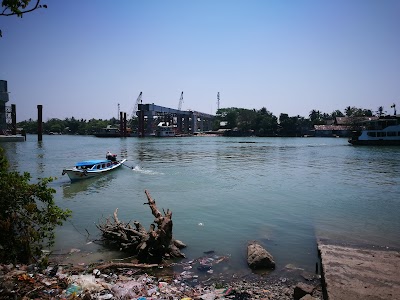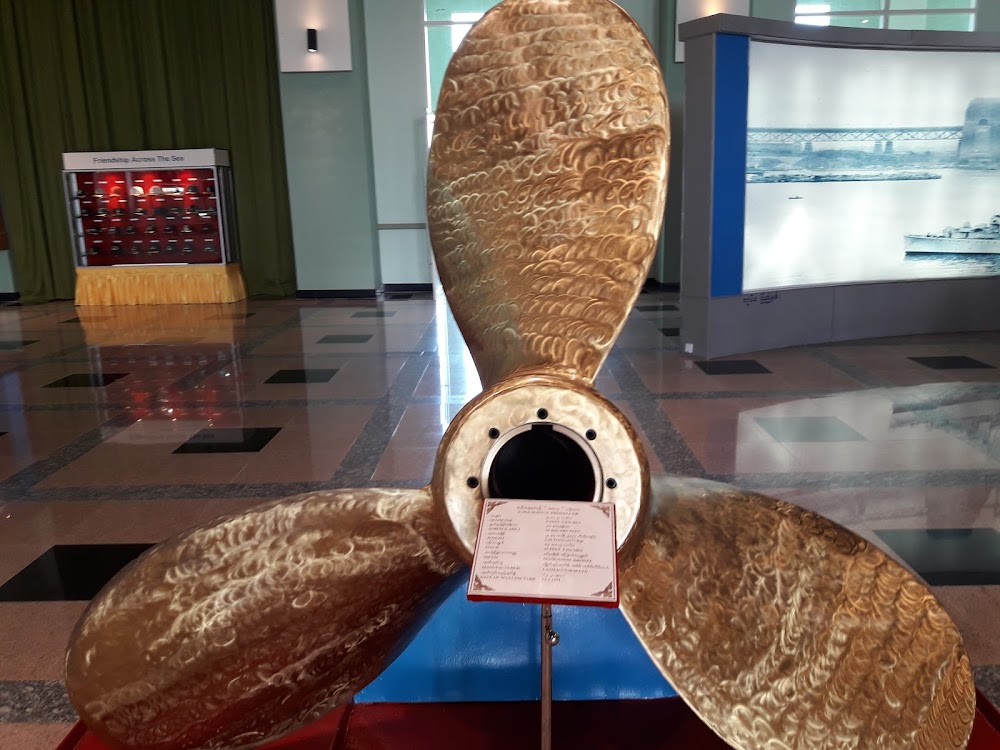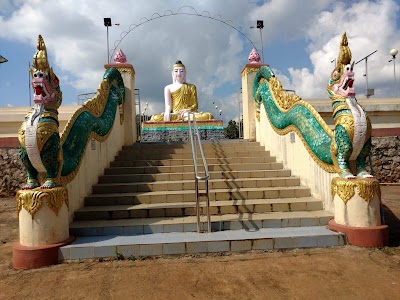Wakema Pagoda (ဝါကီမစေတီ)
Overview
Nestled in the heart of Myanmar’s capital, Nay Pyi Taw, the Wakema Pagoda stands as a beacon of tranquility and spiritual significance. As you navigate through the expansive landscapes of the country’s administrative center, this remarkable pagoda serves not only as a place of worship but also as a cultural landmark steeped in history, offering travelers a unique glimpse into the Burmese spiritual life.
The history of Wakema Pagoda is a captivating journey through time. Established centuries ago, it is believed to have been constructed during the reign of an ancient Burmese king, signifying the deep-rooted Buddhist traditions of the region. The pagoda has withstood the test of time, witnessing Myanmar's evolution from its ancient dynasties to its modern state. This enduring presence underscores the importance of religion in Burmese culture and the pagoda's role as a spiritual touchstone for countless generations.
What makes the Wakema Pagoda particularly significant is its connection to Theravada Buddhism. As one of the major sects of Buddhism, Theravada emphasizes the importance of personal meditation and adherence to Buddha’s teachings as a path to enlightenment. The pagoda serves as a sanctuary where monks and laypeople alike come to meditate, make offerings, and reaffirm their commitment to their faith. For tourists, observing these practices provides a rare and intimate glimpse into the daily lives and spiritual commitments of the local people.
The architecture of Wakema Pagoda is nothing short of breathtaking. Clad in shimmering gold, the pagoda’s spire reaches skyward, crowned by a sacred Hti, an umbrella-like structure often encrusted with jewels. The intricate carvings and ornate decorations adorning the pagoda exemplify traditional Burmese artistry. Surrounding the base are small shrines, each housing statues of the Buddha in various mudras or hand gestures, depicting different aspects of Buddhist teachings.
One of the most intriguing features of the Wakema Pagoda is its collection of ancient relics and artifacts. These sacred items, often enshrined within the pagoda or displayed in nearby structures, are believed to hold significant spiritual power. Relics may include hair strands of the Buddha, ancient manuscripts, and archaeological finds dating back hundreds of years. These objects not only serve as focal points for worship but also as tangible connections to the distant past, inviting visitors to reflect on the rich historical roots of Buddhism in Myanmar.
A visit to Wakema Pagoda is more than just sightseeing; it’s an immersion into a living cultural heritage. Upon arrival, you’ll be greeted by the serene ambiance of the temple grounds. Local devotees might invite you to join in their prayers or partake in communal offerings, adding a personal touch to your visit. Even if you are not a practicing Buddhist, you’ll find your experience at the pagoda deeply moving and introspective, providing a moment of peace and contemplation amidst the hustle and bustle of modern life.
In addition to its religious significance, Wakema Pagoda offers panoramic views of the surrounding area. Visitors can ascend to higher vantage points within the pagoda complex to take in sweeping vistas of Nay Pyi Taw. The sight of the sprawling cityscape juxtaposed against the serene temple grounds creates a striking contrast, reminding you of the harmonious coexistence of the old and the new.
For those interested in deepening their understanding of Burmese culture, a visit to the Wakema Pagoda can be combined with trips to nearby cultural sites. Nay Pyi Taw is home to several other significant pagodas, museums, and markets, allowing you to further explore the rich tapestry of Myanmar’s history and traditions. Local guides are often available to provide enriched context to your visit, detailing the historical and cultural nuances of the site.
Whether you are a fervent traveler with an interest in ancient history or a seeker of spiritual solitude, the Wakema Pagoda in Nay Pyi Taw is sure to leave an indelible mark on your journey through Myanmar. Its historical significance, architectural beauty, and profound sense of peace make it a must-visit destination for anyone exploring this fascinating country.
In conclusion, Wakema Pagoda is not just a tourist attraction; it is a testament to the enduring legacy of Buddhism in Myanmar. It stands as a symbol of faith, history, and culture, inviting visitors from around the world to partake in its serene and sacred atmosphere. When you walk through its gates, you’re not just stepping into a physical location but into a realm of historical tradition and spiritual introspection that will resonate long after your visit.






